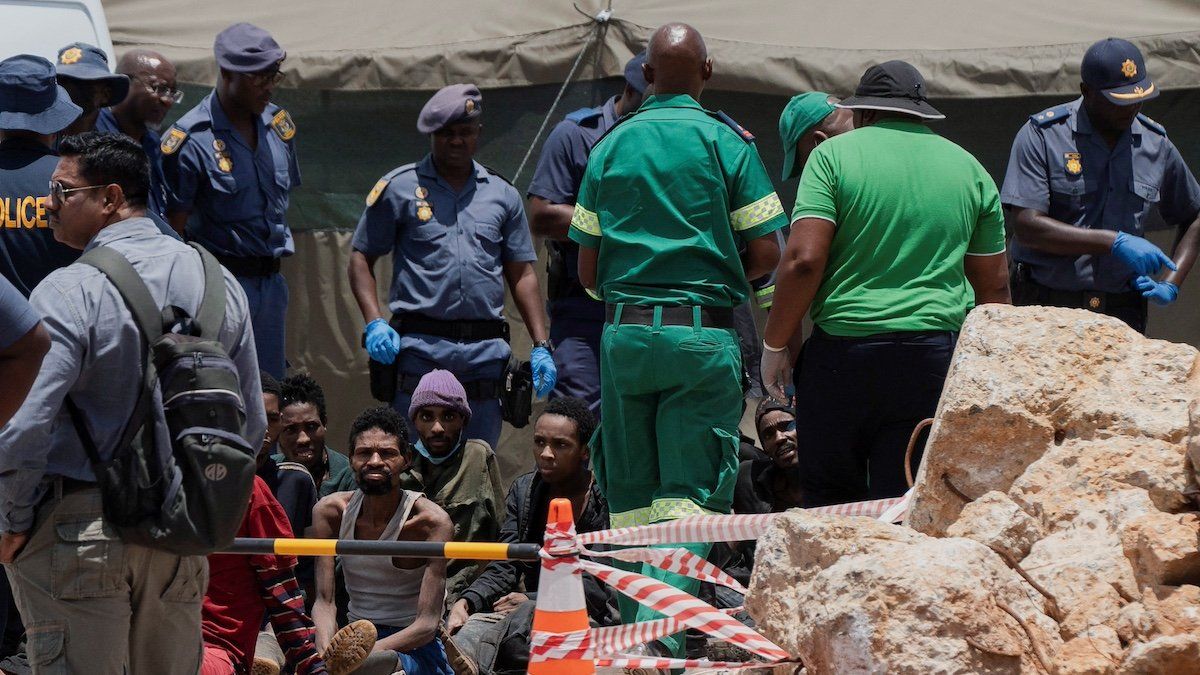South African police said Wednesday that rescuers had recovered 78 bodies and 246 living miners this week from an abandoned gold mine near Stilfontein, southwest of Johannesburg, that has been the site of a tense siege since August. Hundreds more miners were believed to be hiding underground, but rescue volunteers were unable to locate them.
The miners have been hesitant to leave the mine and have gone for months without natural light, including periods without food and water, because police arrested those who surfaced. Over 1,500 miners have been detained since August, and some have been deported.
Vulnerable migrants. The majority of the arrested miners came from Mozambique, Zimbabwe, and Lesotho to seek a better life in South Africa. Instead, they were targeted by criminal gangs that took over abandoned commercial mines and forced disadvantaged migrants to risk their lives extracting what little valuable ore remains.
The men in Stilfontein managed to send letters and pictures via an improvised pulley system that friends and family used to send them food and water. Images of emaciated men sitting among what appeared to be the remains of colleagues have shocked the Rainbow Nation, but police say they are determined to crack down on illegal mining.
Political waves. Tackling the heavily armed gangsters who control the mines, however, will be tough. And the siege threatens to upend politics in Johannesburg, where a delicate alliance between the African National Congress and the Democratic Alliance has held together against all expectations since last summer. The DA is calling for an independent inquiry into the mine operation, and we’ll be watching for cracks in the coalition.
